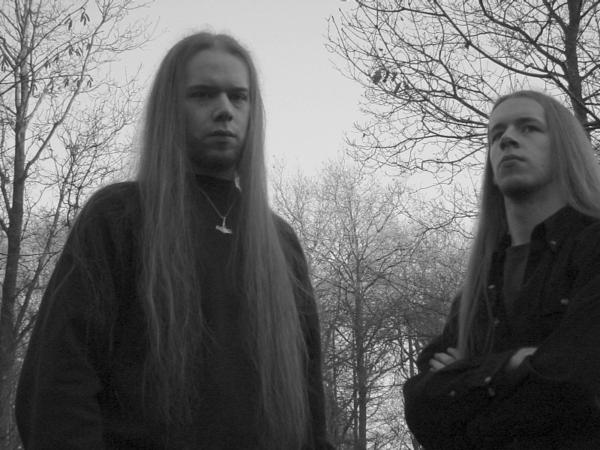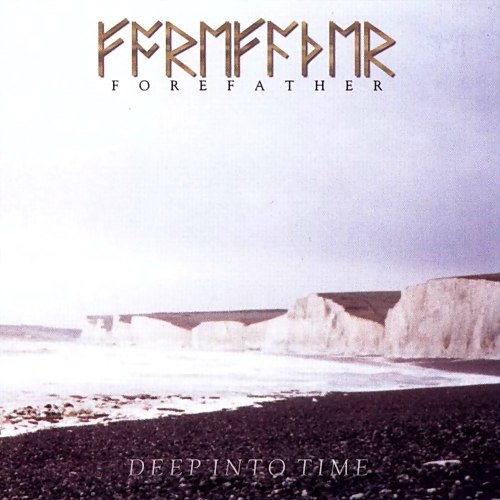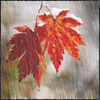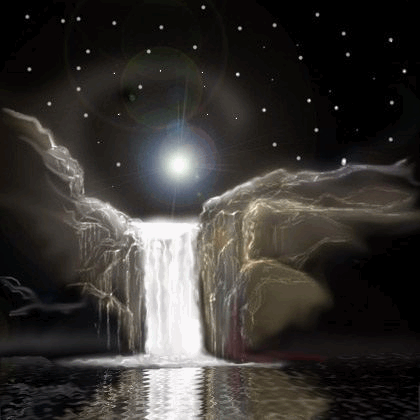
El Black Metal tradicional es un género musical muy definido en sus características básicas, consistentes en: voz gutural aguda, guitarras rápidas, escasa melodía y ritmos repetitivos. La característica principal son las letras anti judeo-cristianas. La mayoría de grupos utilizan un método simple en la composición de la música, mientras que otros se caracterizan más por la técnica. El black metal originario, de primera y segunda oleada, se caracteriza por un sonido «crudo» a base de guitarras muy distorsionadas, y batería acelerada derivada del thrash y el death metal, (utilizando frecuentemente los blast beats, comunes también en el grindcore).
El satanismo, bien simbólico o como un auténtico dogma de fe,suele ser la esencia de la mayoría de bandas de black metal, siendo acompañadas normalmente, por sentimientos profundamente marcados por el odio, la misantropía,la violencia, la guerra, la sabiduría y, sobre todo, antimonoteístas. El black metal evoluciona y combina factores en su composición, añadiendo otros elementos, que conferirán una nueva naturaleza al estilo musical de cada banda. Algunas de estas combinaciones y evoluciones darán lugar a diferentes subgéneros de black metal.
Con suma frecuencia, los integrantes de las bandas usan pseudónimos con nombres cabalísiticos, mitológicos o con significados asociados a la oscuridad del género. A veces es difícil saber el verdadero nombre de los artistas.
La temática de las letras de black metal puede tratar temas realistas (caso de bandas como Marduk), o incorporar una temática fantástica (Emperor, Burzum). En algunas ocasiones tratan sobre el propio black metal (Nargaroth, Darkthrone).
Nacimiento, origen e influencias
Comúnmente se identifica el comienzo del black metal con la aparición de la escena del TNBM a lo largo de los noventa. Fue durante este periodo cuando el desarrollo del black metal se hizo patente, sin embargo el origen del género hay que situarlo un poco antes, y en varios lugares. Antecedentes como Angel witch y su tema Baphomet.
Fueron los británicos Venom, quienes con su demo de 1979, prepararon el camino para la oleada de black metal que debía venir.[12] Welcome To Hell disco de 1981, fue éste un disco bien producido pero pobremente grabado con actitud agresiva y explícitamente satánico. Los fans se dividieron en opiniones respecto a este grupo, quien con su segundo disco, del año 1982, titulado black metal, dieron el nombre al género y supuso una gran influencia para la creación del black metal, tanto por letra o estética entre otros factores, aunque no es un álbum de black metal íntegramente, pues mezcla el sonido de la NWOBHM ruidoso y con toques de thrash metal.[14] Más adelante, la escena clasificó este disco creado por Venom como propio del thrash metal de la vieja escuela, género que sentó las bases del black metal aparecido a finales de los ochenta y principios de los noventa.
Otra banda influyente fue la danesa Mercyful Fate que en 1982 se estrenó con un EP con 4 temas denominado Nuns Have no Fun («Las Monjas no Tienen Diversión») y que comenzaría a tener repercusión en 1983, con el lanzamiento de su primer larga duración, "Melissa". Musicalmente Mercyful Fate no han sido nunca considerados miembros del black metal; siendo calificables estos primeros trabajos en el NWOBHM; pero por temática, origen, y sobre todo estética, su mención no puede ser obviada.
El grupo suizo Hellhammer también supuso una influencia notable, lanzando en 1983 su demo Satanic Rites y en 1984 su EP, Apocalyptic Raids, que se han convertido en lanzamientos de culto. Hellhammer se disolvió y dos de sus miembros formaron Celtic Frost cuyos Morbid Tales y To Mega Therion.
Junto a Venom, el sueco Ace Börje Forsberg, alias Quorthon, grababa Bathory, primer Lp del grupo homónimo Bathory, en octubre de 1984, meses después de que la banda grabase su primer trabajo, incluyendo dos canciones en el split Scandinavian Metal Attack. El disco se grabó con sistemas bastante rudimentarios y con escaso presupuesto confiriendo al sonido una escasísima calidad lo que contribuyó a aumentar la oscuridad de un trabajo, que sumado a los nuevos elementos estilísticos que la banda introducía, sirvió para dar un paso más hacia el sonido actual del black metal. Bathory podría ser considerada por tanto, también como una de las bandas que comenzaron a desarrollar las bases que Venom instauró, junto con las anteriormente mencionadas. Más tarde Bathory lanzaría otros dos discos, The Return... en 1985 y Under the Sign of the Black Mark en 1987, trabajos con una mayor calidad que el primer disco, donde la evolución del grupo y su introspección dentro del género del black metal y su fundamental contribución al mismo comienzan a hacerse patentes.
También son destacables bandas de thrash metal germano como Kreator, Destruction y Sodom, en cuyos trabajos a mediados de los años ochenta aparecieron elementos musicales de notable influencia en el desarrollo y evolución del black metal. Destruction, banda alemana de Thrash Metal formada en 1982, editó su primer EP Sentence of Death en 1984 con una temática satánica que sentó precedente para la siguiente generación de bandas de los años noventa y principios del siglo XXI. Otra de sus grandes aportaciones al black metal, fue el LP Eternal Devastaion de 1986, cuya canción Curse the Gods ha sido considerada como uno de los pilares del black metal de vieja escuela, siendo incluso incluida por parte de Fenriz (batería del grupo noruego Darkthrone), en la compilación Fenriz presents: The Best Of Old School Black Metal en 2004.
Al igual que Sodom y Destruction, los thrashers americanos, Slayer con su primer álbum en 1983 Show No mercy y su EP Haunting the Chapel en 1984, desarrollaron un sonido con ciertos elementos que más tarde prevalecerían en el black metal, aunque ahora sea una banda considerada como fundamentalmente Thrash Old School.[23] De la misma manera, alrededor del globo, bandas como los brasileños Sarcófago, los colombianos Parabellum, descrito por Euronymous como una banda autentica, e influencia junto con reencarnacion del grupo Mayhem. Los italianos Bulldozer, los canadienses Blasphemy, los japoneses Sabbat y sobretodo, el grupo americano VON, aportaron con sus estilos musicales entre el thrash, death y black; y sus letras de corte satánico, los elementos necesarios para el crecimiento del naciente género.[cita requerida]
Desarrollo
Durante los años noventa el género alcanzó su máximo esplendor y Escandinavia fue la cuna del mismo, especialmente en Noruega, donde apareció un movimiento conocido como TNBM (Auténtico black metal noruego en castellano) famoso por la importante trascendencia musical, temática y estética dentro del género de las bandas que se incluyeron en el mismo, especialmente las bandas que formaron parte del conocido como Inner Circle.
Sin embargo, esta escena musical también alcanzó gran trascendencia debido a diversos casos en los que auspició, promovió o se vio envuelta en sucesos de trascendencia criminal, como la quema de recintos religiosos a principios de los años noventa(unas 22 iglesias quemadas en todo el estado, contabilizaron los servicios policiales noruegos, incluyendo las de Flanttoft y Hollmenkollen, especialmente valoradas por la iglesia cristiana en Noruega)y por otros casos violentos, ya fueren suicidios, como el de Per Yngve Ohlin más conocido como Dead, vocalista principal del grupo Mayhem, todo un mito dentro del género del black metal,[26] o como por ejemplo el brutal asesinato[27] de Øystein Aarseth, más conocido como Euronymous, guitarrista de la banda Mayhem, el 11 de noviembre de 1993, a manos de Varg Vikernes, que fuere hasta ese momento bajista de la misma banda, y miembro fundador y único de la banda Burzum, el cual ha arrastrado problemas penales a lo largo de su vida.
Fueron grupos como Burzum, Darkthrone, Emperor o Mayhem, creadores del Inner Circle, los que tomaron los conceptos de minimalismo instrumental,[cita requerida] voz gutural rasgada y aguda y los convirtieron en el camino a seguir. Además, estas bandas aumentaron notablemente la ideología del black metal; el Inner Circle era una organización dedicada a erradicar el cristianismo en Noruega y devolver las creencias y valores paganos.[cita requerida] Sus miembros quemaron varias iglesias de gran importancia y antigüedad en territorio noruego entre otros actos. El Inner Circle se disolvió en 1993, tras asesinar Varg Vikernes, único miembro de Burzum, a Euronymous, líder del grupo Mayhem así como del Inner Circle (más información sobre esta época en el artículo black metal noruego).
Otras bandas de la época fueron Beherit, Marduk, Ulver, Bestial Summoning, Carpathian Forest, Thorns, Graveland, e Impaled Nazarene también dieron grandes aportaciones al género, pero alcanzaron reconocimiento varios años después.
Las bandas de segunda generación comenzaron a introducir nuevos elementos. Fueron los noruegos Emperor quienes añadieron teclados a su estilo musical (sin caer precisamente en el black metal melódico[cita requerida]), variación que es muy popular actualmente, y que ha sido seguida por grupos como Limbonic Art, Graveworm, Mystic Circle, Satyricon Dimmu Borgir, Old Man's Child, Âurorüm Shadows, Arcturus y Borknagar entre otros. Posteriormente grupos como Aborym usarían sintetizadores y teclados en mayor cantidad como base para crear el industrial black metal.[cita requerida]
Surgen otras bandas de tercera generación como Gehenna, Pest, Lucifugum, Armagedda, Dødheimsgard, Taake, 1349, Gorgoroth, Satanic Warmaster y Keep of Kalessin que contrariamente al black metal de tenencia comercial, continúan con la tendencia underground[cita requerida] y con un estilo musical más pesado que otras bandas anteriores.[cita requerida]
Mientras, Bathory cambiaba su estilo sustituyendo ciertos elementos de su música, que se volvió más melódica y con una producción mucho más cuidada, por coros y un tema distinto al satánico, cantando a los padres de su tierra. Es el origen del viking metal, seguido por bandas como Thyrfing.
Estética:
Fue la banda Mercyful Fate la que introdujo por primera vez la pintura corporal en una banda de heavy metal, más concretamente en el rostro de su líder King Diamond. Cabe señalar que esta clase de maquillaje conocido como corpsepaint (en español, «pintura cadavérica»), warpaint o facepaint ya había sido utilizada por bandas de rock como Alice Cooper o KISS utilizando este recurso escénico para atraer mayor atención sobre su música. Esto provocó disputas legales entre el grupo KISS y King Diamond, tras lo cual este último se vio forzado a modificar su diseño para no asemejarse al de Gene Simmons, bajista de KISS.
Más tarde, a principios de los noventa, después de que durante varios años Euronymous y Dead, miembros de la banda noruega Mayhem, usaran el corpsepaint de manera habitual, este género de pintura corporal fue adaptado de forma general por las bandas noruegas pioneras del movimiento y de ahí eclosionó a una estética más bien unitaria[cita requerida] que ha llegado hasta nuestros días.
A esto hay que añadir una vestimenta negra, aunque con escasísimas excepciones de grupos que fusionan géneros, como los alemanes Desaster que utilizan a menudo prendas de corte vaquero. También se utilizan camisetas que hacen alusión a otras bandas, el uso frecuente de muñequeras, brazaletes y cinturones de cuero, con clavos de diferentes tamaños (algunos hasta de 20 cm) o balas, a las cuales se les añaden complementos como colgantes, anillos, cruces invertidas y otra clase de joyería de plata, generalmente con alusiones a aquellos elementos propios de la idolatría de los grupos o su ideología.
Subgéneros
El Black Metal es un género dado a producir muchos subgéneros. Muchos de ellos sólo se diferencian en el tema de las letras de las canciones. Otros, en cambio, tienen diferencia en la estructura o en la instrumentación. A veces resulta difícil clasificar una banda dentro de un subgénero y suele ser catalogada en varios. Por esto la categorización del black metal (su división en subgéneros) es rechazada por muchos, y expandida en demasía por otros (con la introducción de subgéneros extravagantes). De cualquier forma, los principales subgéneros del black metal serían:
Ambient Black Metal
También llamado en inglés atmospheric black metal, es un subgénero musical instrumental, caracterizado por un progresivo abandono de la contundencia y crudeza básica del black metal, para evolucionar la escasa melodía del género hacia un sonido ambiental determinado y con ello, desarrollar una atmósfera que, pese a alejarse de las bases del black metal, mantiene una correlación propia con la idea y el sentimiento del género. Principales Bandas del Género: Burzum con su obra maestra Filosofem, Nortt, Algaion, Xasthur o Ildjarn. En la escena española podemos destacar la banda gallega Dantalion.
Black Metal Nacional Socialista:
El Black Metal nacional socialista también llamado NSBM y BMNS es un subgénero musical del black metal caracterizado fundamentalmente por su temática letrística y por su estética, fortísimamente politizada, más concretamente, por estar en relación directa o indirecta con el movimiento nacionalsocialista. A nivel musical, en el plano de sonido no existe una diferenciación consistente con el black metal, siendo habitual que los grupos, pese a formar parte de la escena del black metal nacional socialista, tengan un sonido perteneciente a algún subgénero del BM. A nivel letrístico, nos podemos encontrar con grupos con una clara manifestación ideológica y política, habiendo en muchas ocasiones arduos debates entre los propios militantes de esos movimientos políticos extremistas, y los seguidores del movimiento musical. Bandas destacadas:Absurd precursor del movimiento, Aryan Terrorism, Forest, Nokturnal Mortum, Graveland, Branikald, Der Stürmer, Aryan Art, Totenburg, Geimhre, o Aryan Blood.
Black Metal Melódico
Es un subgénero musical en el que las bandas que lo integran, sacrifican la escasa melodía del propio black metal, para introducir un fuerte componente melódico tanto instrumentalmente como a nivel de voz. Siendo está una de las ramas mas odiadas del estilo por los verdaderos conocedores del Black Metal, ya que no cumplen con los parametros sembrados durante años por el verdadero Black Metal. Bandas destacadas: Catamenia, Borknagar, Dimmu Borgir, Arthemesia, Chthonic.
Black Metal Sinfónico
Es un subgénero musical del black metal, escasamente definido. Se basa fundamentalmente en la incorporación de grandes teclados, orquestaciones y un acercamiento más melódico, con un objetivo claro, abandonar la sombra del black metal de la vieja escuela, para intentar conferirle al género principal una contundencia y grandiosidad sólo alcanzable con teclados virtuosos y orquestaciones adecuadas, pero nunca exageradas. Nos hemos encontrado con diferentes experimentos, y resultados abrumadoramente diversos, ejemplos podrían ser el disco "Anthems to the Welkin at Dusk" de Emperor, una obra maestra sin paliativos del black metal sinfónico; en contraposición, podríamos destacar la mayoría de los trabajos de Dimmu Borgir, que, sin entrar a debatir la calidad de los mismos, resulta bastante unánime la doctrina de que su intento de introducir esa sinfonía extrema a sus trabajos, rompió la relación de la banda con el black metal, de la que sólo queda ya, la simbología y la estética.Bandas destacadas del género: Dimmu Borgir,Emperor(algunos de sus discos),Diabolical Masquerade,Anorexia Nervosa, Graveworm, Opera IX o Limbonic Art.
Fusiones
La propia evolución de los géneros de metal extremo, así como el gran número de bandas con un estilo propio difícilmente subsumible bajo una sola etiqueta ha dado como resultado la aparición de subgéneros musicales resultantes de la fusión de varios estilos, con diversos resultados, llegando a, como veremos, la creación de géneros de pleno derecho fruto de esta unión:
Black/Doom Metal
Es un subgénero musical también conocido como "black metal depresivo o "abyssic black metal", difícilmente subsumible o delimitable, debido a lo laxas o escasamente unificadas y comunes que son las características de los grupos que presuntamente lo practican (véase diferencias tangibles entre Nocturnal Depression y Nortt por ejemplo). El género, resultante de una unión estilística entre el black metal y el doom metal, es muy poco consistente en cuanto a unas características musicales definidas, siendo la letra, que trata sobre temas acerca de suicidio y muerte, tragedia y, penas y melancolía, la que confiere la esencia característica de todas estas bandas. Bandas destacadas: Nocturnal Depression, Silencer, Dolorian, Forgotten Tomb, los canadienses Niflheim, Nae'blis o los fineses Inferi.
Blackened Death Metal
Fusión entre los géneros death metal y black metal, usualmente fundamentada en una combinación de estética y líricas, con riffs, blast beats y voces guturales más propias del death metal. Bandas destacadas: Angelcorpse, Anaal Nathrakh, Behemoth, Belphegor, Dissection, Goatwhore, God Dethroned, Impaled Nazarene, Panzerchrist y Zyklon (quienes incorporan tambien elementos industriales a su sonido)
Folk y Viking Black Metal
Unificación de la música folk con el black metal, dejando a los primeros estilos la letra y cierta instrumentalidad, y el aspecto general de sonido, normalmente, al segundo. Se incluye el pagan black metal y el folk black metal debido a que son estilos de escasa consolidación y de fácil confusión, provocado por la semejanza en todos los aspectos de sus bandas. No se debe confundir sin embargo, con sus variantes, como el viking metal o celtic metal, que poseen sus propias características, al igual que el propio folk Metal. Bandas destacadas: Falkenbach, Moonsorrow, los españoles Nazgûl, Menhir, Wyrd, Enslaved, Xerión, Skyforger, Temnozor, Kampfar, Berserk y los madrileños Hordak.
Industrial Black Metal
La fusion de la musica industrial y el black metal. Las bandas que destacan en este subgenero son Samael, Aborym, The Kovenant, ...and Oceans (actualmente Havoc Unit), Dødheimsgard, Turmion Kätilöt .
Escenas locales
En los Estados Unidos se ha desarrollado un movimiento llamado USBM, para denominar a las bandas oriundas de este país. Algunos ejemplos son Kult Ov Azazel, Abigail Williams, Cobalt, Wolves In The Throne Room, Agalloch, Absu, Goatwhore (banda de Black/Death formada por miembros de Soilent Green), Ludicra (formada por miembros de Impaled), Dragonlord (formada por miembros de Testament) y Viking Crown (con la participación de Phil Anselmo).
De igual forma, pese al origen escandinavo del género y el carácter Nacional Socialista que se le atribuye a algunas agrupaciones, en Latinoamérica pueden verse numerosos artistas, compositores y ejecutantes del género con su visión propia. Entre los más destacados: En Brasil los legendarios Sarcofago, Darkest Hate Warfront y Spell Forest; en Colombia los imponentes Horncrowned, Satanizer y Bestialized; en México proyectos como Xiuhtecuhtli y Hacavitz (banda formada por Antimo Buonnano, ex vocalista de Disgorge); en Argentina, Vampiria, Nibiruth, Mastifal; en Venezuela, Noctis Imperium (con Nicholas Barker en la batería), Gorepriest, Veldraveth, Funebria; en Perú, Belzec y Goat Semen; en Ecuador estan los iniciadores del black metal en Guayaquil Incarnatus, Grimorium Verum, Atis y Mutilated Christ de Quito, Legion de Manabí entre otras.




























































